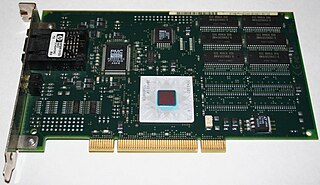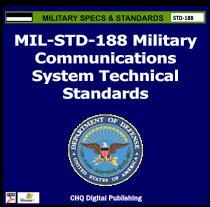
Asynchronous Transfer Mode (ATM) is a telecommunications standard defined by ANSI and ITU standards for carriage of user traffic, including telephony (voice), data, and video signals. ATM was developed to meet the needs of the Broadband Integrated Services Digital Network, as defined in the late 1980s, and designed to integrate telecommunication networks. Additionally, it was designed for networks that must handle both traditional high-throughput data traffic and real-time, low-latency content such as voice and video. The ATM network reference model approximately maps to the three lowest layers of the ISO-OSI reference model: physical layer, data link layer, and network layer. ATM is a core protocol used in the SONET/SDH backbone of the public switched telephone network (PSTN) and in the Integrated Services Digital Network (ISDN), but has largely been superseded in favor of next-generation networks based in Internet Protocol (IP) technology, while wireless and mobile ATM never established a significant foothold.

Integrated Services Digital Network (ISDN) is a set of communication standards for simultaneous digital transmission of voice, video, data, and other network services over the traditional circuits of the public switched telephone network. It was first defined in 1988 in the CCITT "Red Book". Prior to ISDN, the telephone system was viewed as a way to transport voice, with some special services available for data. The key feature of ISDN is that it integrates speech and data on the same lines, adding features that were not available in the classic telephone system. The ISDN standards define several kinds of access interfaces, such as Basic Rate Interface (BRI), Primary Rate Interface (PRI), Narrowband ISDN (N-ISDN), and Broadband ISDN (B-ISDN).
Digital subscriber line is a family of technologies that are used to transmit digital data over telephone lines. In telecommunications marketing, the term DSL is widely understood to mean asymmetric digital subscriber line (ADSL), the most commonly installed DSL technology, for Internet access.

Time-division multiplexing (TDM) is a method of transmitting and receiving independent signals over a common signal path by means of synchronized switches at each end of the transmission line so that each signal appears on the line only a fraction of time in an alternating pattern.[<It is a communication process that transmit 2 or more digital signals or analogue signals over a common chanel>] It is used when the bit rate of the transmission medium exceeds that of the signal to be transmitted. This form of signal multiplexing was developed in telecommunications for telegraphy systems in the late 19th century, but found its most common application in digital telephony in the second half of the 20th century.

MIL-STD-188 is a series of U.S. military standards relating to telecommunications.

X.25 is an ITU-T standard protocol suite for packet-switched data communication in wide area networks (WAN). It was originally defined by the International Telegraph and Telephone Consultative Committee in a series of drafts and finalized in a publication known as The Orange Book in 1976.

Basic Rate InterfaceorBasic Rate Access is an Integrated Services Digital Network (ISDN) configuration intended primarily for use in subscriber lines similar to those that have long been used for voice-grade telephone service. As such, an ISDN BRI connection can use the existing telephone infrastructure at a business.
ALOHAnet, also known as the ALOHA System, or simply ALOHA, was a pioneering computer networking system developed at the University of Hawaii. ALOHAnet became operational in June, 1971, providing the first public demonstration of a wireless packet data network. ALOHA originally stood for Additive Links On-line Hawaii Area.
GeoPort is a serial data system used on some models of the Apple Macintosh that could be externally clocked to run at a 2 Mbit/s data rate. GeoPort slightly modified the existing Mac serial port pins to allow the computer's internal DSP hardware or software to send data that, when passed to a digital-to-analog converter, emulated various devices such as modems and fax machines. GeoPort could be found on late-model 68K-based machines as well as many pre-USB Power Macintosh models. Some later Macintosh models also included an internal GeoPort via an internal connector on the Communications Slot. Apple GeoPort technology is now obsolete, and modem support is typically offered through USB.
Terrestrial Trunked Radio, a European standard for a trunked radio system, is a professional mobile radio and two-way transceiver specification. TETRA was specifically designed for use by government agencies, emergency services, for public safety networks, rail transport staff for train radios, transport services and the military. TETRA is the European version of trunked radio, similar to Project 25.
ISDN Digital Subscriber Line (IDSL) uses ISDN-based digital subscriber line technology to provide a data communication channel across existing copper telephone lines at a rate of 144 kbit/s, slightly higher than a bonded dual channel ISDN connection at 128kbit/s. The digital transmission bypasses the telephone company's central office equipment that handles analogue signals. IDSL uses the ISDN grade loop without Basic Rate Interface in ISDN transmission mode. The benefits of IDSL over ISDN are that IDSL provides always-on connections and transmits data via a data network rather than the carrier's voice network.

A registered jack (RJ) is a standardized telecommunication network interface for connecting voice and data equipment to a service provided by a local exchange carrier or long distance carrier. Registration interfaces were first defined in the Universal Service Ordering Code (USOC) system of the Bell System in the United States for complying with the registration program for customer-supplied telephone equipment mandated by the Federal Communications Commission (FCC) in the 1970s. They were subsequently codified in title 47 of the Code of Federal Regulations Part 68.
A leased line is a private bidirectional or symmetric telecommunications circuit between two or more locations provided according to a commercial contract. It is sometimes also known as a private circuit, and as a data line in the UK.
B channel (bearer) is a telecommunications term which refers to the ISDN channel in which the primary data or voice communication is carried. It has a bit rate of 64 kbit/s in full duplex.

The DMS-100 Switch Digital Multiplex System (DMS) was a line of telephone exchange switches manufactured by Northern Telecom. Designed during the 1970s and released in 1979, it can control 100,000 telephone lines.

Multichannel Audio Digital Interface (MADI) or AES10 is an Audio Engineering Society (AES) standard that defines the data format and electrical characteristics of an interface that carries multiple channels of digital audio. The AES first documented the MADI standard in AES10-1991, and updated it in AES10-2003 and AES10-2008. The MADI standard includes a bit-level description and has features in common with the two-channel AES3 interface.

A modular connector is a type of electrical connector for cords and cables of electronic devices and appliances, such in computer networking, telecommunication equipment, and audio headsets.
Packet Layer Protocol or PLP is the Network Layer protocol for the X.25 protocol suite. PLP manages the packet exchanges between DTE devices across VCs. PLP also can be used on ISDN using Link Access Procedures, D channel (LAPD).
McASP is an acronym for Multichannel Audio Serial Port, a communication peripheral found in Texas Instruments family of digital signal processors (DSPs) and Microcontroller Units (MCUs).
The McASP functions as a general-purpose audio serial port optimized for the needs of multichannel audio applications. Depending on the implementation, the McASP may be useful for time-division multiplexed (TDM) stream, Inter-Integrated Sound (I2S) protocols, and intercomponent digital audio interface transmission (DIT). However, some implementations are limited to supporting just the Inter-Integrated Sound (I2S) protocol.
The McASP consists of transmit and receive sections that may operate synchronized, or completely independently with separate master clocks, bit clocks, and frame syncs, and using different transmit modes with different bit-stream formats. The McASP module also includes up to 16 serializers that can be individually enabled to either transmit or receive. In addition, all of the McASP pins can be configured as general-purpose input/output (GPIO) pins.

NXDN is an open standard for public land mobile radio systems, that is systems of two way radios (transceivers) for bidirectional person-to-person voice communication. It was developed jointly by Icom Incorporated and Kenwood Corporation. It is an advanced digital system using FSK modulation that supports encrypted transmission and data as well as voice transmission. Like other land mobile systems, NXDN systems use the VHF and UHF frequency bands.








